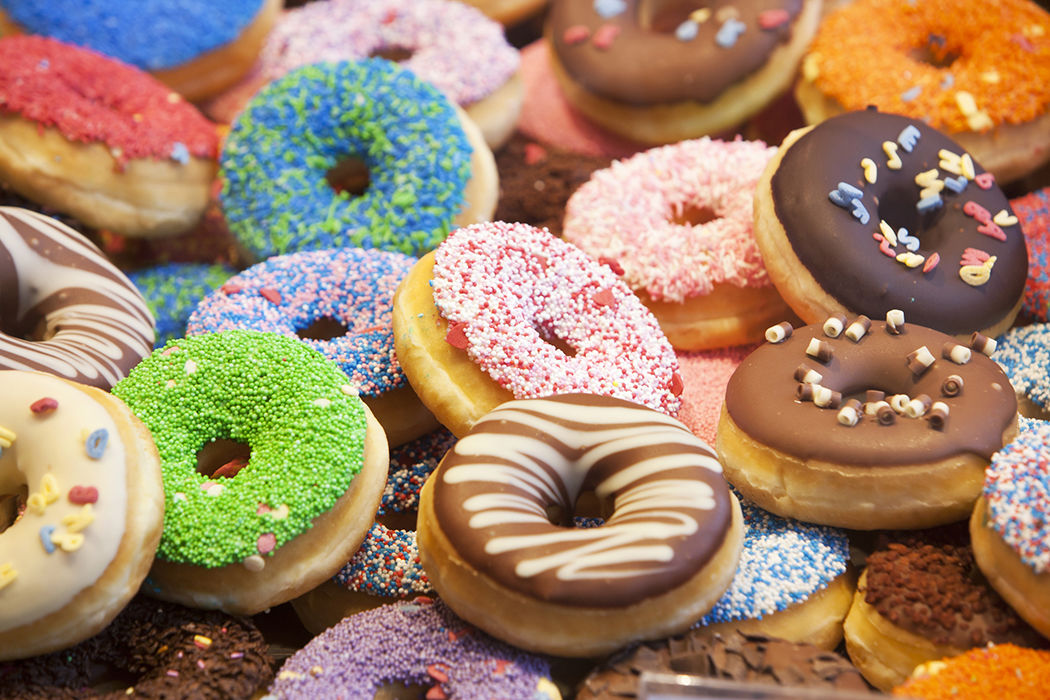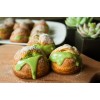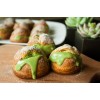How To Make The Best Donuts?
Homemade doughnuts are amazingly tender. In all honesty, they can also be a major pain to make, but when you're aiming to impress, these will do the job every single time.
Doughnuts are usually deep-fried from a flour dough, and typically either ring-shaped or a number of shapes without a hole, and often filled, but can also be ball-shaped ("doughnut holes"). Other types of batters can also be used, and various toppings and flavorings are used for different types, such as sugar, chocolate, or maple glazing. Doughnuts may also include water, leavening, eggs, milk, sugar, oil, shortening, and natural or artificial flavors.
The two most common types are the ring doughnut and the filled doughnut, which is injected with fruit preserves, cream, custard, or other sweet fillings. Alternatively, small pieces of dough are sometimes cooked as doughnut holes. Once fried, doughnuts may be glazed with a sugar icing, spread with icing or chocolate on top, or topped with powdered sugar or sprinkles or fruit. Other shapes include rings, balls, flattened spheres, twists, and other forms. Doughnut varieties are also divided into the cake (including the old-fashioned) and yeast-risen type doughnuts. Doughnuts are often accompanied by coffee purchased at doughnut shops or fast food restaurants, but can also be paired with milk.
INGREDIENTS
DOUGH FOR THE DOUGHNUTS
- 500g/17.6 oz of AP flour
- 1/2cup 120mL lukewarm water
- 1/2cup 120mL lukewarm milk
- 1 tbsp yeast instant dry
- 1 large egg
- 1 large yolk
- 4 tbsp sugar 1/4 cup
- 4 tbsp butter / 58g softened
- Generous pinch of salt
GLAZE
- 2 cup icing sugar or confectioner's sugar
- 1/3 cup +a few tbsp milk
- 1 tsp vanilla
INSTRUCTIONS
DOUGHNUT DOUGH
Set aside about 1/4 cup of the flour and place the rest in the mixing bowl with the sugar, water, milk, yeast mix, eggs and salt (that excess flour you set aside is in case you need it later).
Mix on low speed with the paddle attachment or kneading hook on your mixer, until the mix comes together.
If you used the paddle mix, switch to the dough hook and start kneading the dough.
Add the softened butter (1/2 - 1 tbsp at a time) until it's all incorporated. Add some flour, if you need to get the dough off the sides of the bowl. Add the rest of the flour if needed, to form a soft dough ball.
Knead the dough for about 5 - 7 minutes until you have a soft, shiny, slightly tacky dough.
Knead the dough for a couple of minutes in your hands till you have a smooth dough ball.
Place this ball of dough in a lightly oiled bowl (with enough room to rise) and cover with plastic wrap. (remember to place the dough with the seam side down).
Let the dough rise at room temperature (70-75°F) till it is has doubled in size - this should take about an hour, maybe less depending on how warm the ambient temp. is. (If you are pressed for time, you can skip this step and let it proof overnight in the fridge - for at least 8 hours).
Gently release the air in the dough and refrigerate the dough overnight (this helps develop the flavors of the dough better and the dough is easier to handle when it's chilled. However, you could roll out the dough and start cutting at this point if you wish. But I recommend leaving it overnight - or at least a few hours in the refrigerator).
Next morning, take the dough out on to a floured surface and roll it out to an inch thickness.
Cut out 3-3.5 inch diameter doughnuts with a doughnut cutter - or use a large and small biscuit or cookie cutter.
Place the doughnuts and doughnut holes on a parchment paper. Knead the leftover dough lightly and let it rest for about 30 minutes, and repeat rolling and cutting once more.
Cover the cut doughnuts and doughnut holes with plastic wrap and let them rise for about 1 hour (see tips in the post to check if the doughnuts are proofed properly).
Heat a good amount of oil or shortening (the doughnut needs to float at least 2 inches above the bottom of the pan) in a heavy bottomed pan.
When the oil is heated to 375°F/190°C, carefully drop in a doughnut. After 30 - 45 seconds, check to see if the doughnut has turned a golden brown. If it has, flips it over. If it hasn't, leave it for a few seconds longer and then flip it over (the doughnut will darken as they cool down, so be careful not to let it darken too much while frying).
Transfer the doughnut to a wire rack to let it cool.
To glaze, place a doughnut in the prepared glaze and turn to coat it completely. Then keep it on a wire rack to let the excess glaze drip. Sprinkle with confetti or sprinkles if you like, before the glaze sets.
FOR THE GLAZE
Sift the icing sugar, add vanilla and whisk in the milk or water - 1 tbsp at a time, until you get a pourable consistency. Add coloring if you like.
Related Articles
Search
Categories
Popular Posts























Comments: 0
No comments